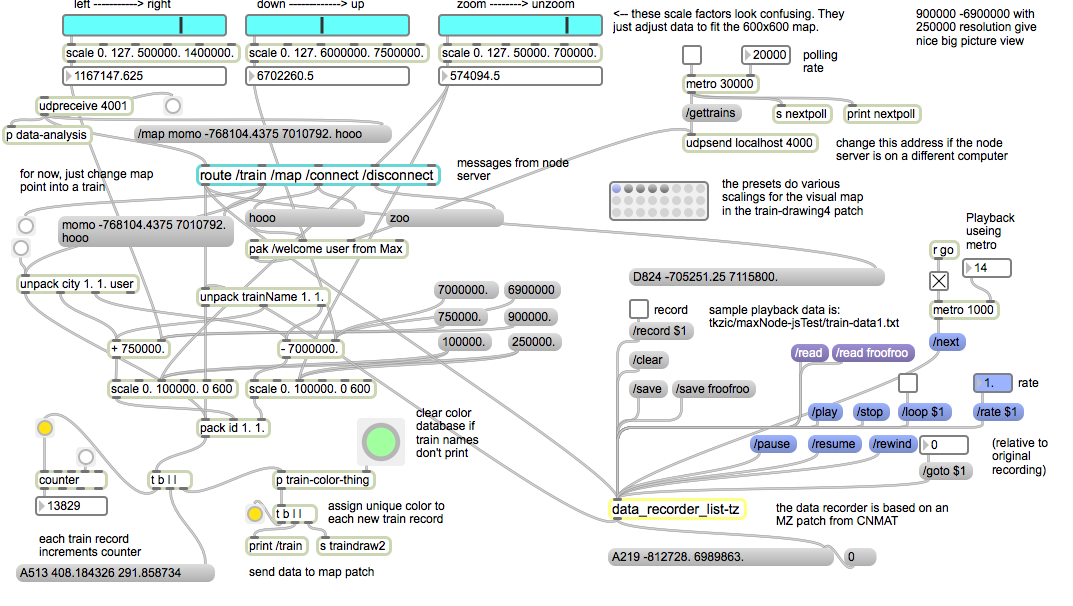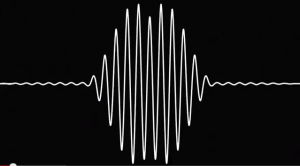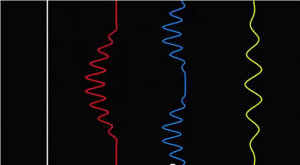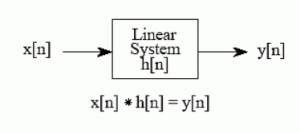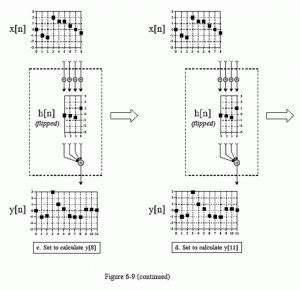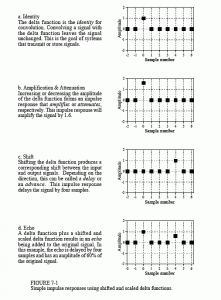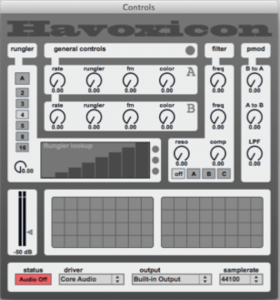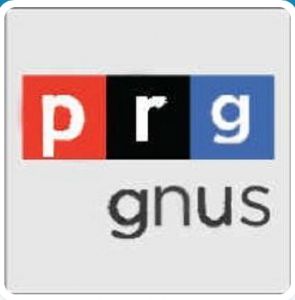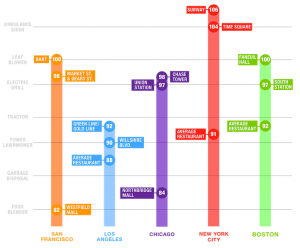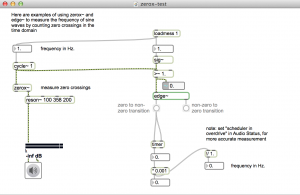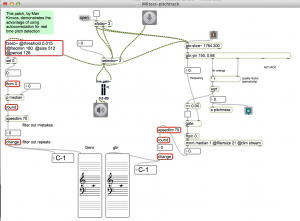Convolution and Voices
Convolution
part 1 – The time domain:
(The frequency domain):
The impulse response
- Decomposition
- Unit impulse (delta function)
- convolution (from the input side and output side)
- filters
From the output side:
The convolution sum:
A ‘block diagram’ of a high pass filter. The impulse response of low pass filter is subtracted from the impulse response of an all pass filter. Note that the all pass filter is the ‘delta response’:
Applications
- Ableton Live: convolution reverb (M4L)
- Creative convolution (Mark Durham) http://sounddesignwithmax.blogspot.com/2014/01/creative-convolution-part-1-resonate.html
Voices

- Synthesizing voice
- Formant synthesis:
- Mark Durham: https://reactivemusic.net/?p=9294,
- Tutorial by Jordan Smith: https://reactivemusic.net/?p=9290
- Formant synthesis:
- vocaloid
- vocaloid Max example: https://reactivemusic.net/?p=6891
- Vocaloop (prototyped in Max) http://vocaloop.jp/
- Singer Songwriter Professional 10 https://reactivemusic.net/?p=6959 from: http://en.wikipedia.org/wiki/Internet_Co.,_Ltd.
- vocoder
-
- vocoder: (ableton Obama vocoder example)
- How vocoders work: https://reactivemusic.net/?p=17218
- Wikipedia: http://en.wikipedia.org/wiki/Vocoder
- Max/MSP: examples/effects/classic-vocoder-folder/classic_vocoder.maxpat
- Csound FOF example in M4L (m4l-fof-test3
- Bernie Krause: Soundscapes
- Geophony, Biophony, Anthrophony
- The Voice of The Natural World: http://blog.ted.com/2013/06/12/the-voice-of-the-natural-world-bernie-krause-at-tedglobal-2013/
- TED: http://www.ted.com/talks/bernie_krause_the_voice_of_the_natural_world
- The Nonesuch Guide to Electronic Music (track 25 – periodic 3 square waves) http://www.allmusic.com/album/the-nonesuch-guide-to-electronic-music-collectors-choice-mw0000348044
Examples
- animal sounds in different languages http://foundintranslation.berkeley.edu/?p=2440 (broken link?)
- Derek Abbot’s animal noise page: http://www.eleceng.adelaide.edu.au/Personal/dabbott/animal.html
- Quack project http://www.quack-project.com/table.cgi
- Douglas Bako – Voicejam: https://reactivemusic.net/?p=7354
- Pitch transposing a baby https://reactivemusic.net/?p=2458
- The sound of nothing: David Tinapple: http://vimeo.com/1962465# (broken link?)
- Bobby McFerrin: (pentatonic scale) http://www.ted.com/talks/bobby_mcferrin_hacks_your_brain_with_music.html
- Alphabet vocals
- jii lighter https://reactivemusic.net/?p=6970
- Sesame St http://www.youtube.com/watch?v=y819U6jBDog
- Mario Paint Composer 4’33 http://createdigitalmusic.com/2008/04/free-mario-paint-composer-for-windows-and-mac-mario-does-john-cage/
- Fictional language dialog: https://reactivemusic.net/?p=7242
- The Speech accent archive https://reactivemusic.net/?p=9436
- cataRT https://reactivemusic.net/?p=9264
Questions
- Why do most people not like the recorded sound of their voice?
- Can voice be used as a controller? (Imitone: http://imitone.com)
- How do you recognize voices?
- Does speech recognition work with singing?
- How to remove vocals – https://reactivemusic.net/?p=1498
- How can we listen to ultrasonic animal sounds
- Where can you find Acapella tracks http://www.acapellas4u.co.uk/portal.php http://www.djtechtools.com/2013/07/28/getting-vocals-for-track-acapellas-for-djs/
